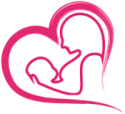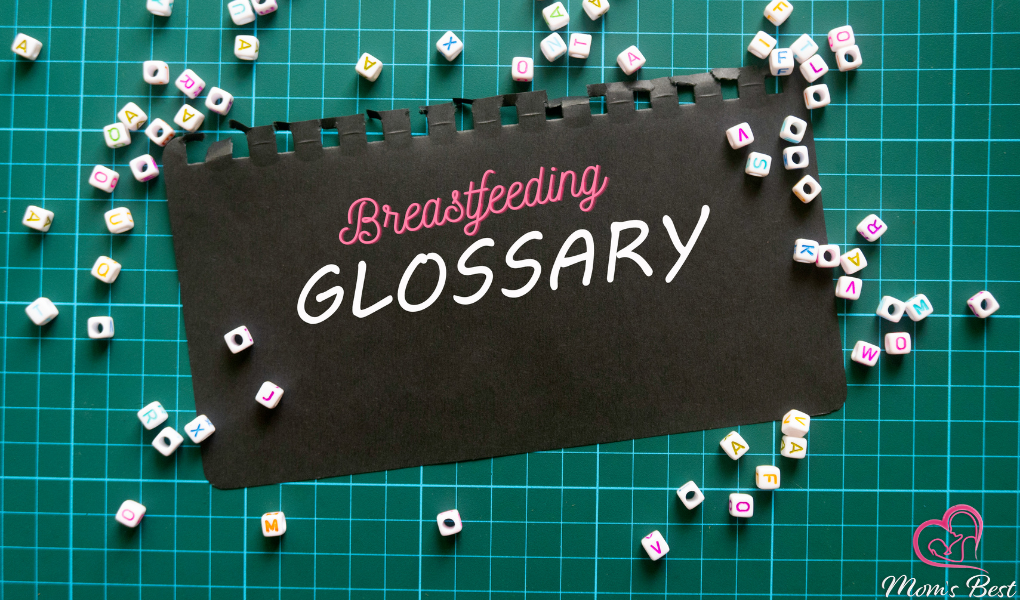Breastfeeding is a unique experience that requires a special language to navigate it. Whether you are a new or experienced mom, understanding commonly used breastfeeding terms will help you feel more confident and better prepared for your breastfeeding journey. Here is a list of breastfeeding terms and their definitions to get you started:
Areola: The areola is the dark, circular area surrounding the nipple.
Alveoli: The small clusters of cells or glands that produce and secrete milk.
Blocked milk ducts: When milk ducts become clogged or blocked, preventing milk from flowing freely. This condition can lead to mastitis if left unresolved.
Biological nursing: A relaxed breastfeeding position, often used by women with smaller breasts or who want to rest while breastfeeding.
Breast crawl: When a newborn is placed on their mother’s abdomen shortly after birth, they have the ability to crawl and attach to the breast on their own.
Breast pump: A machine that uses suction to extract breast milk from the breast. Breast pumps can be manual or electric.
Breast milk bank: An organization that collects, screens, processes, and distributes donated human breast milk to premature or sick infants.
Breast milk expression: The process of using a breast pump or other method to extract breast milk from the breasts.
Breast milk donor: A woman who donates her breast milk to a milk bank or directly to another mother or baby.
Breast milk storage guidelines: The recommendations for storing expressed breast milk, including how long it can be stored in the refrigerator or freezer, and how to thaw and warm it before feeding it to the baby.
Cabbage leaf: Using cabbage leaves as a compress on the breast may reduce swelling due to the anti-inflammatory compounds in cabbage. They can also feel cool and refreshing on engorged breasts.
Colostrum: A thick, creamy, yellow substance produced by the breast after childbirth for the first few days. Colostrum is the baby’s first feed and is full of valuable nutrients and immune-boosting enzymes to give the baby a healthy start.
Cooper’s ligaments: The ligaments that support the breast tissue. These should be supported during breastfeeding to prevent stretching and sagging.
Cluster feeding: When a baby wants to eat a lot of food in a short period of time, often preceding a growth spurt.
Clutch hold: Also known as the football hold, this is a breastfeeding position used by women who have had C-sections, twins, or large breasts. The baby is tucked under the arm, similar to a football, and fed this way.
Cradle hold: A common breastfeeding position where the baby lies across the mother’s body, resting on the mother’s elbow. The mother’s other arm supports the baby’s back.
Colic: A common condition affecting one in five babies in the early months. It involves abdominal pain, irregular sleep patterns, and crying.
D-MER: Dysphoric Milk Ejection Reflex, a condition in which a mother experiences negative feelings (such as anxiety or sadness) just before or during the milk ejection reflex.
Duct: A passageway that stores and carries milk from the alveoli to the nipple for the baby to drink.
Engorgement: When the breast becomes sore and swollen due to excess milk.
Expressed breast milk: Breast milk that has been pumped or hand-expressed.
Extended breastfeeding: When a toddler continues to breastfeed past the age of one year.
Exclusively pumping: When a mother uses a breast pump to provide all of her baby’s milk, rather than breastfeeding directly.
Feeding on demand: Feeding the baby when they are hungry, rather than on a fixed schedule.
Flat nipple: A nipple that does not protrude, which can make breastfeeding more challenging for some mothers.
Flange: The part of the breast pump that connects to the breast.
Flanged lips: When the baby’s lips are extended, open, and slightly curled, forming an oval shape. A good latch is indicated by flanged lips.
Foremilk: The first milk released by the breast at the beginning of each feed, which is watery and quenches the baby’s thirst.
Formula: A chemically derived and synthesized cow’s or plant-based milk with added fats and nutrients that is dehydrated to form a powder. When mixed with water, it resembles breast milk and is used by mothers who are unable or choose not to breastfeed their baby.
Frenulum: The membrane or piece of tissue in the mouth that joins the upper lip to the gums, or the piece that joins the tongue to the floor of the mouth. The frenulum is important for breastfeeding.
Growth spurt: A period of rapid weight gain and increased appetite in infants and toddlers, occurring at around 2 weeks, 6 weeks, 3 months, and 6 months of age. Growth spurts may cause a temporary increase in breast milk demand.
Hindmilk: The milk produced by the breast at the end of a feed, which is higher in fat and calories than foremilk. It is important for the baby to receive enough hindmilk to ensure proper growth and development.
Hydration: The process of keeping the body sufficiently hydrated by consuming enough fluids. Proper hydration is important for the production of breast milk.
Induced lactation: The process of inducing lactation in a woman who is not pregnant or has not recently given birth, usually for the purpose of adopting or fostering a baby.
Lactation consultant: A professional who is trained to help mothers and babies with breastfeeding. Lactation consultants can provide education, support, and guidance to mothers, and may work in hospitals, private practice, or other settings.
Lactation Massager: A device used to massage the breast and help with mastitis and milk let-down reflex.
Latch: The way the baby attaches to the breast while breastfeeding. A good latch is important for successful breastfeeding.
Leaking breasts: When breast milk is released from the breast involuntarily, often as a result of a full breast or the milk ejection reflex.
Letdown reflex: The release of breast milk from the breast in response to the baby’s sucking or other stimuli. The letdown reflex is also known as the milk ejection reflex.
Lingerie: Clothing specifically designed to support and shape the breasts. Nursing lingerie has cups that can be easily opened to allow for breastfeeding.
Lochia: The vaginal discharge that occurs after childbirth, consisting of blood, tissue, and bacteria. Lochia usually lasts for several weeks and may resemble a heavy period. It is important to keep the area clean and dry to prevent infection.
Low milk supply: When a mother is not producing enough breast milk to meet the needs of her baby. This can be caused by various factors, such as poor latch, medical conditions, or stress.
Manual expression: The process of using the hands to extract breast milk from the breasts, rather than using a breast pump. Manual expression can be done in addition to or instead of breastfeeding or pumping.
Mastitis: An infection of the breast tissue that can occur in breastfeeding mothers, often as a result of blocked milk ducts. Mastitis can cause fever, breast pain, and flu-like symptoms, and requires treatment with antibiotics.
Milk blister: A small, painful blister on the nipple that is caused by a blockage in the milk ducts. Milk blisters can be treated by expressing the milk and keeping the area clean and dry.
Milk ejection reflex: The release of breast milk from the breast in response to the baby’s sucking or other stimuli. The milk ejection reflex is also known as the letdown reflex.
Milk production: The process of producing breast milk in the mammary glands. Milk production is regulated by hormones and the baby’s sucking and swallowing patterns.
Milk supply: The amount of breast milk produced by the mother. Milk supply is affected by various factors, including the baby’s latch, the mother’s hydration and diet, and the frequency and duration of breastfeeding sessions.
Mozart effect: The theory that listening to classical music can improve cognitive function, including milk production in breastfeeding mothers. The evidence for the Mozart effect is mixed and more research is needed to confirm its effectiveness.
Sore nipples: When the nipples are painful or sensitive, often as a result of poor latch or improper breastfeeding technique. Sore nipples can be treated by using a nipple cream, changing the breastfeeding position, or using a breast shield.
Sucking: The action of the baby’s mouth and tongue creating a vacuum around the nipple and breast to obtain breast milk. Sucking is an important aspect of breastfeeding.
Supply and demand: The principle that the more a baby sucks on the breast, the more breast milk the mother will produce. This helps to ensure that the baby’s needs are met and the mother’s milk supply is maintained.
Supplemental nursing system: A device that allows the mother to feed her baby breast milk or formula while breastfeeding, by providing a steady flow of milk through a tube attached to the breast. This can be helpful for mothers with low milk supply or babies with difficulty breastfeeding.
Swallowing: The action of the baby’s mouth and throat moving the breast milk from the mouth to the stomach. Swallowing is an important aspect of breastfeeding.
Thrush: A yeast infection that can affect the nipples, mouth, or diaper area of the baby. Thrush is treated with antifungal medication, and both the mother and baby should be treated to prevent reinfection.
Tongue-tie: A condition in which the baby’s tongue is attached too tightly to the floor of the mouth, limiting its movement. Tongue-tie can make breastfeeding difficult and may require treatment with a minor procedure to release the tongue.
Weaning: The process of gradually replacing breastfeeding with other forms of feeding, such as formula or solid food. Weaning can be initiated by the mother or the baby, and should be done gradually to avoid discomfort and maintain the bond between the mother and baby.
Wet nurse: A woman who breastfeeds another woman’s baby. Wet nursing was more common in the past and is now rare, but it may be an option for mothers who are unable to breastfeed their own babies due to medical reasons or adoption.
If you awesome moms want to help me add to this list – leave me comments with more to add and I’ll add it.




